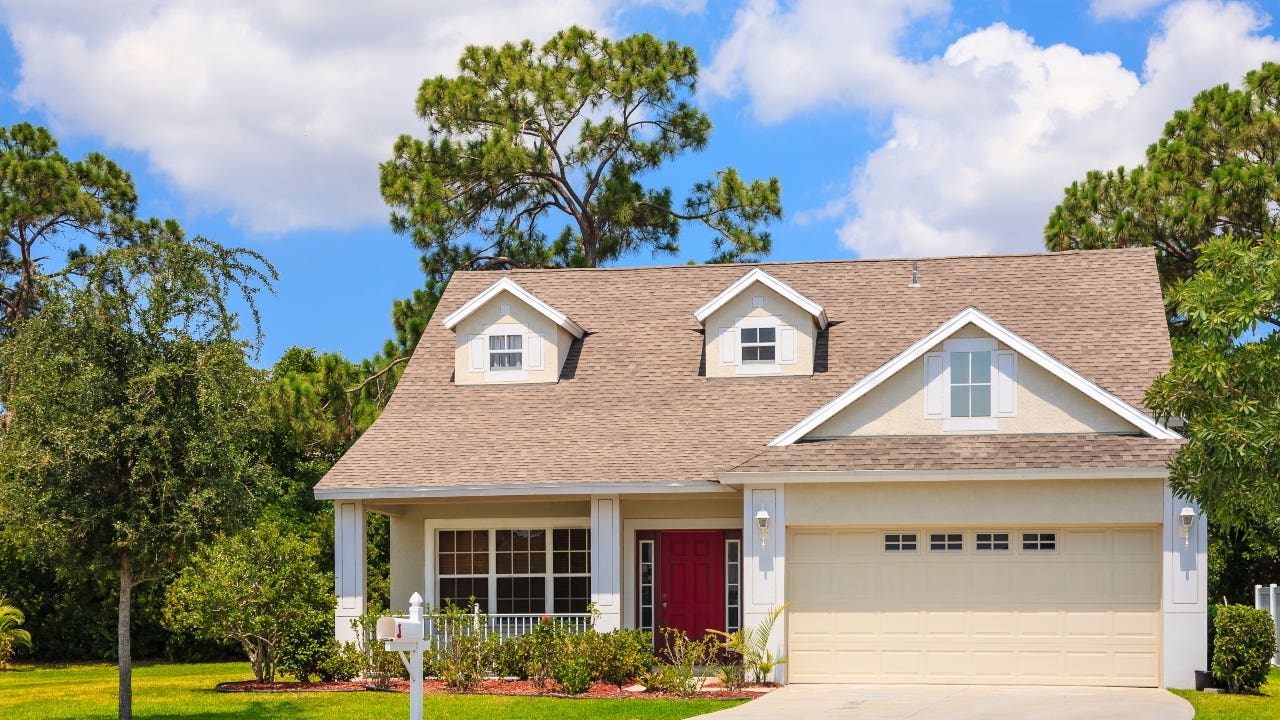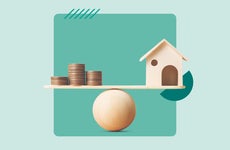What is the APR on a mortgage and how does it work?

The Bankrate promise
At Bankrate we strive to help you make smarter financial decisions. While we adhere to strict , this post may contain references to products from our partners. Here's an explanation for .
Our writers and editors used an in-house natural language generation platform to assist with portions of this article, allowing them to focus on adding information that is uniquely helpful. The article was reviewed, fact-checked and edited by our editorial staff prior to publication.
Key takeaways
- APR stands for annual percentage rate and represents the full annual cost of borrowing money for a mortgage, including interest and additional fees.
- APR is a more accurate representation of the overall cost of a mortgage compared to just the interest rate.
- The APR calculation varies by lender but might include the origination fee, any mortgage points you purchased and some closing costs, for example.
When you’re buying a house, sometimes it can feel like mortgage lenders and brokers are speaking a different language. If you’re shopping for a mortgage, you’ll likely come across the term APR, which is an important concept to understand before you commit to a home loan.
So, what is the APR on a mortgage, and how do you know what makes a good one? Here’s what you need to know and how to calculate this percentage.
What is the APR on a mortgage?
The APR on a mortgage stands for annual percentage rate. It signifies the yearly cost of your loan, which includes not just the interest rate but also additional charges like the origination fee and mortgage points. This makes the APR a better indicator of the full cost of borrowing money for a mortgage than the interest rate alone, so it’s important to understand this number when comparing lenders to get the best deal for you financially.
Mortgage APR vs. interest rate
The interest rate is simply an annual percentage that shows how much it costs to borrow money from a lender. It doesn’t account for any extra fees or charges related to the loan — that’s where the APR comes into play. For the most accurate comparison between two mortgage offers, the APR will give you a much better idea of how much each offer will cost overall than just the interest rate.
What is included in APR?
Keep in mind not all costs are always incorporated in the APR, and the way lenders calculate APR can vary. That’s why it’s important to ask lenders which fees they factor into the APR calculation for your loan.
To give you that all-in cost, some of the fees the APR might factor in include:
- Origination fee: This fee covers the cost to process and fund your home loan.
- Mortgage points: You can purchase points from your lender to lower your interest rate.
- Some closing costs: These costs, which you can pay at closing or roll into your loan, cover a variety of services necessary to start and finalize a real estate transaction.
- Private mortgage insurance: If you put down less than 20 percent on your home, you’ll have to pay for this insurance.
- Underwriting fees: During underwriting, your lender assesses whether you’ll be approved for a mortgage, and these fees cover this service.
- Escrow and settlement fees: You may need to pay a few months’ worth of insurance premiums and property taxes at closing, which will be held in a mortgage escrow account.
- Broker fees: You’ll need to pay these fees if you use a mortgage broker.
How to calculate your APR
Good news: You don’t have to do the math here. The mortgage lender calculates the APR for you. If you want to double-check the lender’s work, you can calculate the APR yourself by following these steps:
- Add up the interest and fees you’ll pay over the loan term.
- Divide that number by your loan principal.
- Divide that figure by the number of days in the loan term.
- Multiply that answer by 365.
- Finally, multiply that number by 100 to convert the APR to a percentage.
Or, if you want to do things with less pencil-pushing, you can use Bankrate’s mortgage APR calculator. Once you input the loan information, you’ll receive a full amortization, or repayment, schedule, either by year or by month.
Mortgage APR examples
Many lenders advertise the APR for their loan products, which can help you more accurately compare mortgage offers and costs.
Once you find a mortgage lender, have your loan officer walk you through different APR scenarios so you can make an informed decision. For example:
| APR with fee and no points | APR with fee and 1 point | APR with fee and 2 points | |
|---|---|---|---|
| Amount borrowed | $310,000 | $310,000 | $310,000 |
| Interest rate | 6.5% | 6.25% | 6.0% |
| Loan term | 30 years | 30 years | 30 years |
| Origination fee (1% of amount borrowed) | $3,100 | $3,100 | $3,100 |
| Points (1% of amount borrowed) | $0 | $3,100 | $6,200 |
| APR | 6.596% | 6.691% | 6.787% |
APR FAQ
-
In terms of mortgages, the two main types of APRs you should know include:
- Fixed APRs: If you choose a fixed-rate mortgage, you’ll get a fixed APR. That means the APR stays the same for the life of your loan. If you get a 30-year fixed mortgage, for example, you’ll have that same APR for all 30 years.
- Variable APRs: As the name suggests, variable APRs change after a set introductory period. This applies if you get an adjustable-rate mortgage. As the base interest rate on your loan changes, the APR adjusts accordingly.
-
The mortgage market changes on a daily basis, so a “good” APR one day might not be so good the next. Currently, mortgage rates have been fluctuating, so if you’re ready to buy a home and a lender offers you a rate you like, ask for a rate lock. Keep an eye on rates so you understand longer-term trends and what’s considered a fair rate. Bankrate’s mortgage rate tables can help.
-
Your credit score plays a significant role in determining the APR you’re offered when applying for a mortgage. A higher credit score usually means a lower interest rate, as it signals to lenders that you’re a lower-risk borrower. Conversely, a lower credit score could lead to higher rates due to the increased risk you pose to lenders.
-
APR represents the yearly cost of a loan, including fees, while annual percentage yield (APY) shows the yearly earnings on an investment, taking compound interest into account. Compound interest impacts nearly all financial transactions, but APR is generally presented for loans, and APY is generally presented for savings, vehicles and investments.
Related Articles



